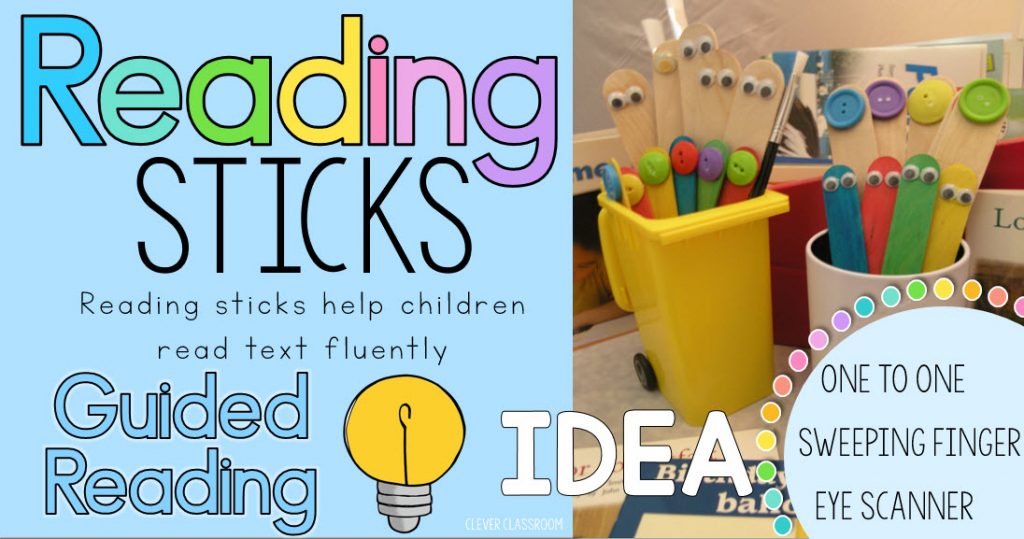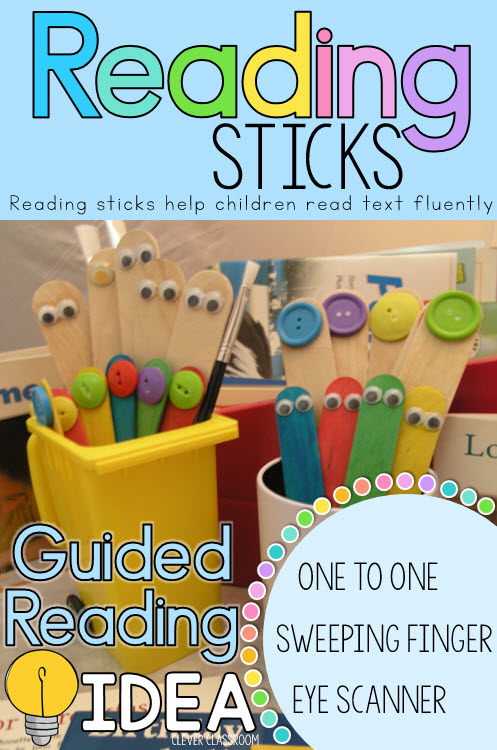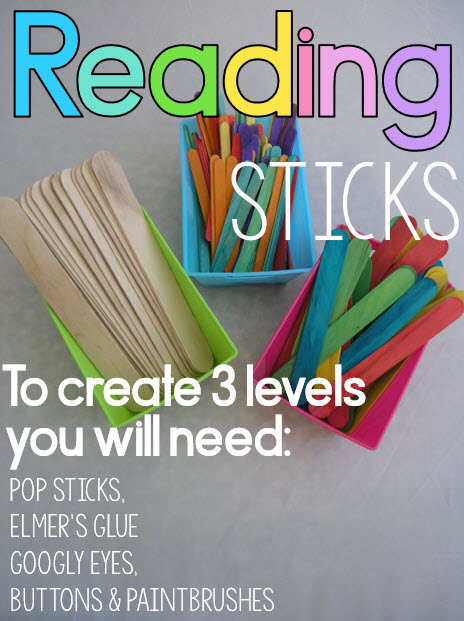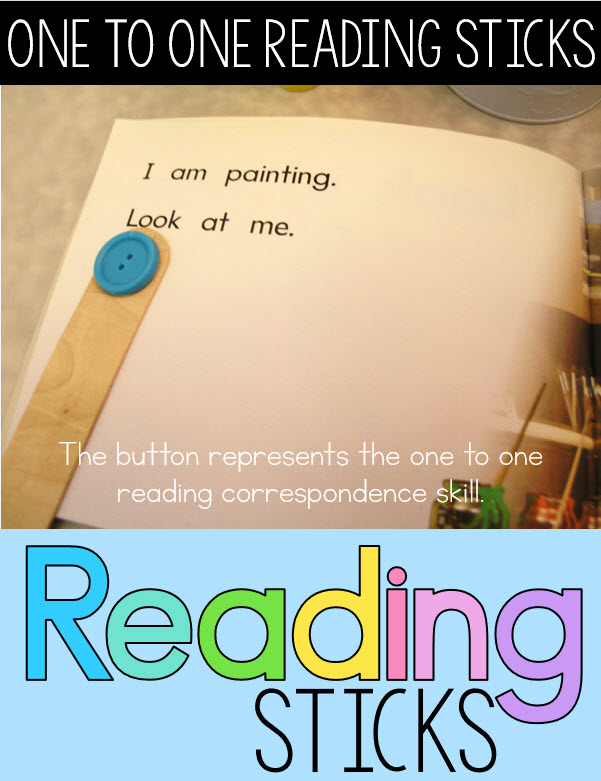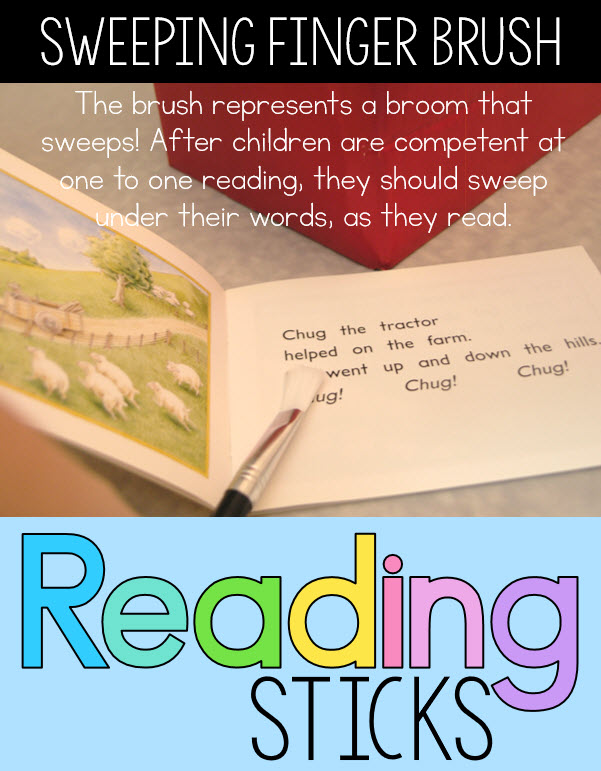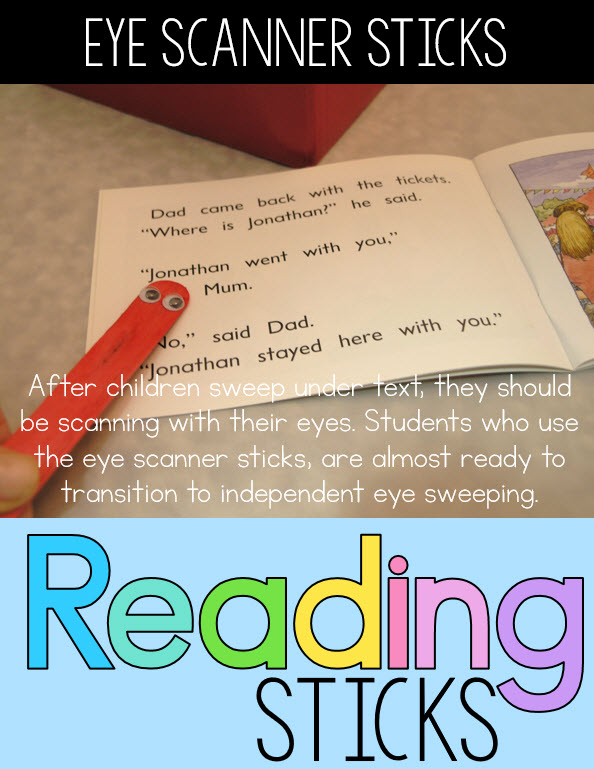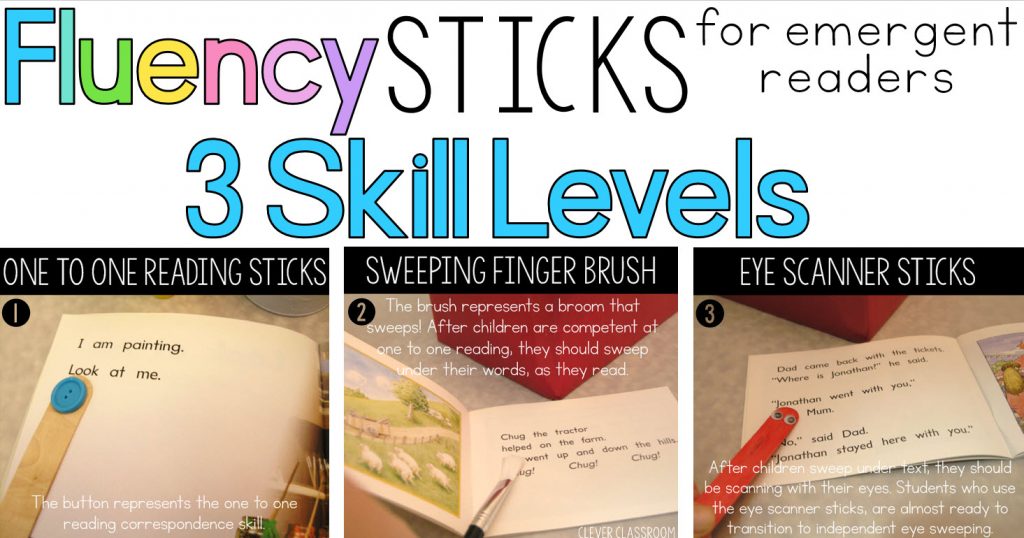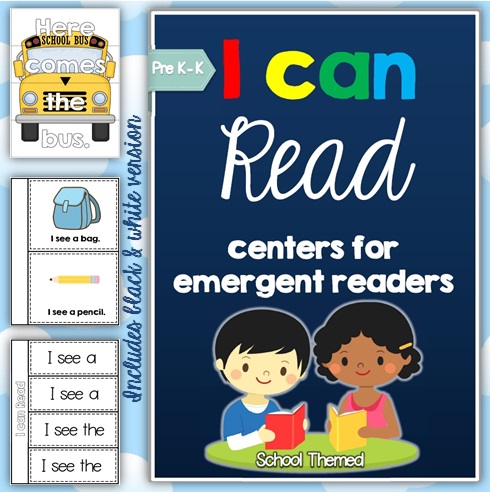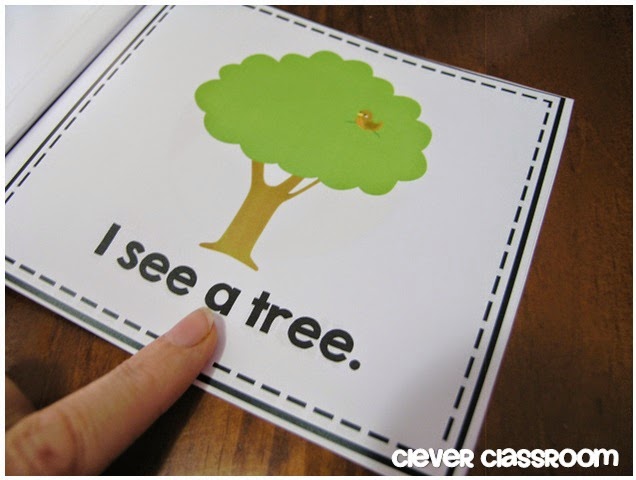Okay, let's talk guided reading for emergent readers.
Reading comprehension and fluency are vital reading competencies for any reader, especially our beginning readers. These leveled reading pointers provide a FUN, hands-on system for your students to grow their fluency. These reading sticks will help children follow and understand the text that they are reading.
When I taught kindergarten I had an inspirational mentor who helped me understand loads of things like: phonemic awareness, phonics, guided reading and spelling strategies. I am so passionate about these aspects of teaching all these years later. She helped me understand 1:1 correspondence with text and how students move from that to sweeping their finger under the text as they read. Finally, students should move away from these two foundations to reading just with their eyes. This was a great framework for my students.
Providing a Concrete System to help Children with Fluency
I found that some of the students needed concrete materials to motivate their reading progress. I came up with a fun way to help my students. Reading pointers aren't new, they have been around for years. I remember using them more that 15 years ago!
Another great idea is to use transparent counters to help students read the word they are pointing too.... anyway....
Providing students with a system will ultimately help them grow and motivate them to keep going. It's kind of like giving them goals to work towards. We all love that, right?
Different Countries, Different Guided Reading Levels or Systems
I know that different countries use different leveled systems, eg. letter and numbers and some colors. Which system does your state or country use to represent leveled readers?
No matter which system, I am referring to the first emergent and beginning reader levels. You might implement the graduation of pointing, sweeping and eye sweeping slightly different to myself, that's okay, you can decide when to change up the sticks.
What do I Need?
The sticks are easy and very quick to make. your students might like to help!
I found three different sized popsticks, but you could use just one size if you wanted.
What are the Three Levels?
One on one correspondence is first. I use this for the first 2-3 levels.
I promote reading with a sweeping finger for the next two levels. The best way I thought my students would understand this was with a paintbrush. Woot-woot, it's kind of FUN!
Then finally, I encourage students to be using no fingers, and just their eyes to follow the text as they read. I would invite students to use the eye sticks for one level as a transition to independent eye scanner reading. After this, there are no more sticks!
These fun sticks are a great way to help children progress and develop their reading competencies. I hope your students love them too.
Thanks so much for dropping by. I hope this idea helps to motivate your students as they develop their reading skills.
Similar Teaching Ideas
You might also like our Reading Reminder Slips which are a fantastic way to communicate with parents and also remind students which skills they are working on at home with their take-home readers.
If you're looking for emergent reading centers that are hands-on and that will last the entire year, and are also super-dopper FUN, your students will enjoy these centers and printables. They are matched with kindergarten or emergent reader skills set for both reading and writing. Click the image to see more.
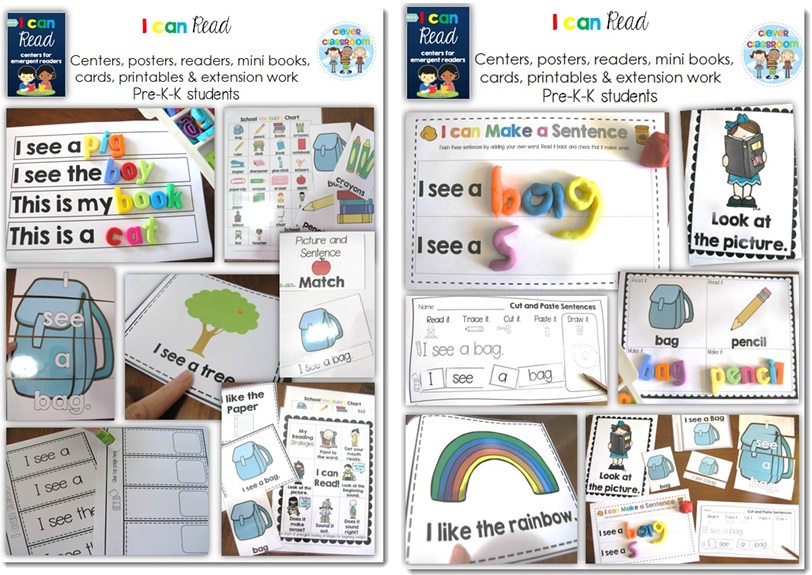
Thanks so much for reading, I do hope it helps.
If you are a mad word work and reading nut like me, then you might like to join me over on my blog;
Clever Classroom.
You can also follow Elementary Chalkboard to receive updates from more than 30 of our talented teacher-bloggers.
Thanks for dropping by.
Emma



















